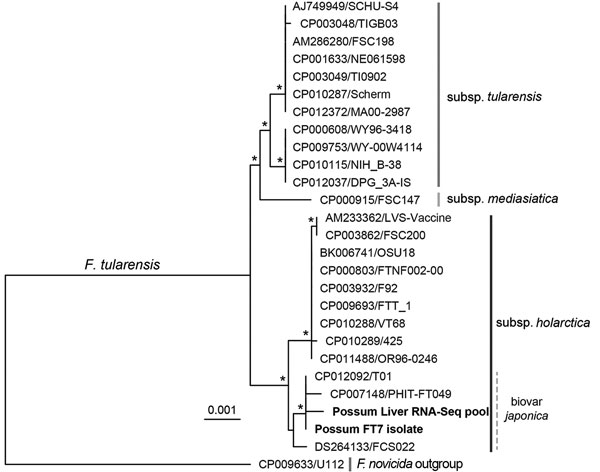Volume 23, Number 7—July 2017
Dispatch
Francisella tularensis ssp. holarctica in Ringtail Possums, Australia
Figure 1

Figure 1. Multilocus phylogenetic analysis of Francisella tularensis isolates, including ringtail possum sequences from Australia. The alignment comprised 5 concatenated housekeeping genes (LepA, RecA, GyrB, AtpD, and TrpB) from the ringtail possum FT7 isolate and RNA-Seq pool (boldface) as well as National Center for Biotechnology Information whole-genome reference sequences (27 sequences, alignment length 7,009 nt). The coverage of each gene from the RNA-Seq data was 71.8%–100%, with mean depths of 1.4×–4.4×. Phylogenetic analysis was performed by using the maximum-likelihood method in PhyML (Hasegawa-Kishino-Yano plus gamma substitution model with 1,000 bootstrap replicates) and rooted by using a F. novicida isolate (U112). Isolates are labeled with GenBank accession number and name, and subspecies are indicated. Scale bar indicates number of substitutions per site, and asterisks represent nodes supported by bootstrap values >70%.
1These authors contributed equally to this article.